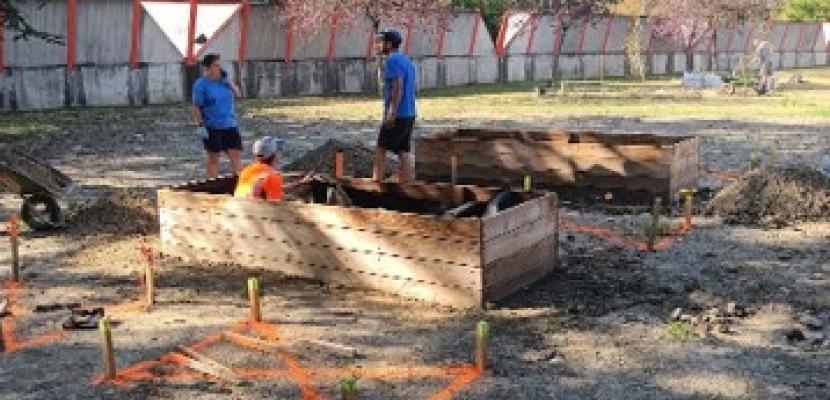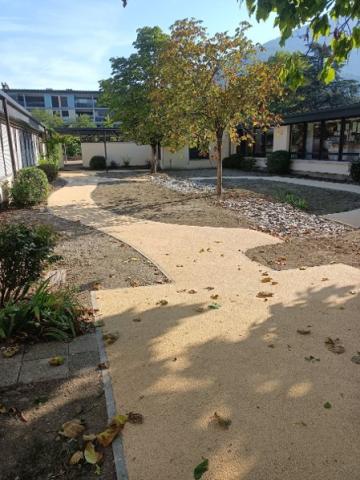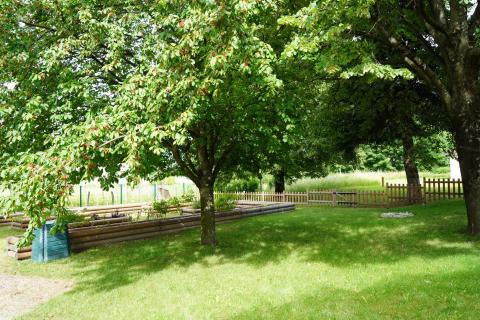
Resilient Schoolyards

About this good practice
Albertville is a French city of 20,000 inhabitants. Its 13 schools represent a large part of the property assets of the municipality. However, they are built with old materials such as asphalt and need a deep restoration. The municipality decided a multi-year action plan for the greening of these schoolyards in order to turn them into cold islands, while using recycled materials and having a sustainable management of green spaces and water. Greening includes the redevelopment of children's play areas, the creation of educational vegetable gardens with edible plants and use of native plant species, furniture adapted to new outdoor activities with wood fences and the recovery of rainwater.
For every schoolyard, the process starts in September with discussions with the concerned schools’ headmasters and teachers to collect specific requirements. The local education authority and the prefecture are also notified. Within a few months, the definitive choices of school and project are adopted and furniture is purchased. Works are conducted in July and August during the summer holidays.
The stakeholders involved are the elected officials and the finance team of the city to grant a budget, the education department to conduct the project, the municipal agents from the technical department to conduct works. The external stakeholders involved are the teachers to better fit to the needs of the school and the Ministry of Education.
Expert opinion
Resources needed
The project renovates two schoolyards per year, which costs 100k€ per year (total amount of 600k€ in 2020 - 2026). Funds are internal (local transition fund) or external (Water agency, State). Work is mainly carried out by different municipal departments in charge of maintaining public property.
Evidence of success
6 schoolyards from 3 schools were restored between 2021 and 2024 with new game areas and tools for outdoor activities. They are now fresh places with less asphalt and much more vegetation composed of edible plants, and native species. Rainwater recovery and the use of recycled materials for fittings generate savings. In addition, the atmosphere at school is more relaxed as students are calmer. There is a new team cohesion thanks to this cross-sectoral and innovative project, in-house conception.
Potential for learning or transfer
The legal feasibility of transferring the good practice depends on national laws regarding schools. In France, public primary schools are owned by the cities. This means that the decisions can be made at a local scale.
The staff are municipal agents (green spaces, buildings, roads, metal works), and they did not require additional training to complete the works. They used their knowledge regarding local weather conditions, the use of native plant species and innovative ways to collect rainwater. Also, to curb the local financial impact, in-house conception was carried out to reuse most of the building materials as they came from the municipal workshops.
There was no need for a specific IT tool.
As the good practice is based on greening of schoolyards, there should be no big constraint in transferring this to other places.
Further information
Images


Documents
NACAO_REX Albertville schoolyards PPT.pdf
Good practice owner
You can contact the good practice owner below for more detailed information.
